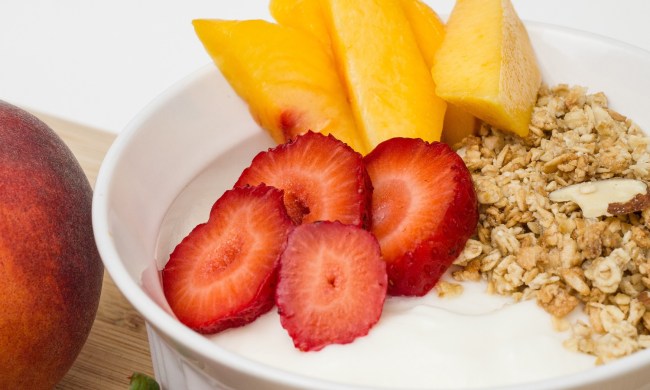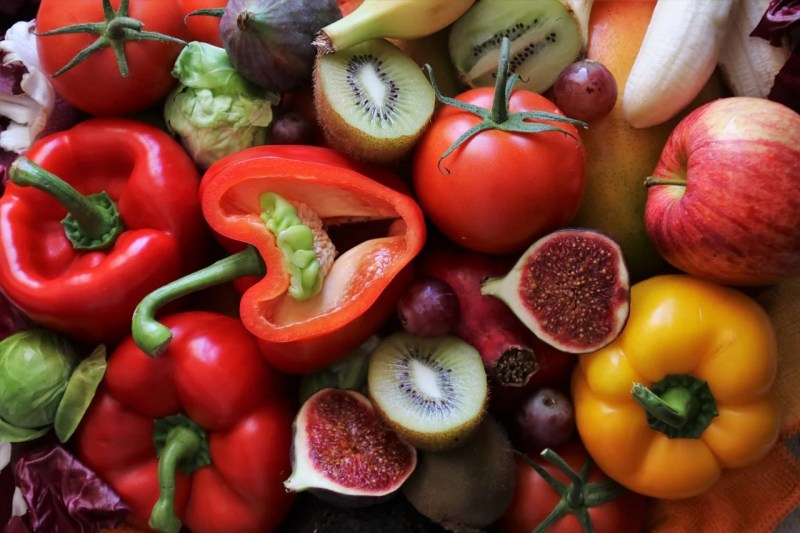
As cold and flu season approaches, many of us turn to oranges and orange juice to double down on vitamin C, a powerful antioxidant lauded for its integral role in supporting the immune system in fighting viruses and infections. Foods high in vitamin C play a variety of other functions in the body as well. If you understand how antioxidants work, then you know that vitamin C acts as a free radical scavenger and helps minimize oxidative damage. In this way, vitamin C can help protect against the development of certain chronic diseases such as heart disease and some cancers, as these pathologies can be the product of accumulated oxidative damage. Vitamin C also helps accelerate wound healing and is involved in protein metabolism and the absorption of iron.
Citrus fruits like oranges, grapefruit, lemons, and clementines do contain a good dose of vitamin C, but there are actually lots of other fruits and healthy vegetables that are even richer sources of this potent antioxidant. In fact, when ranked according to the concentration of vitamin C per gram, oranges are about ninth on the list of the best sources of vitamin C. Therefore, as you reach for a nice crate of clementines or a bag of oranges to add to your shopping cart to help stave off winter colds and viruses, consider adding some of the other vitamin C heavy hitters also found in the produce aisle. In no particular order, we share 11 of the fruits and vegetables highest in vitamin C below.
Guava
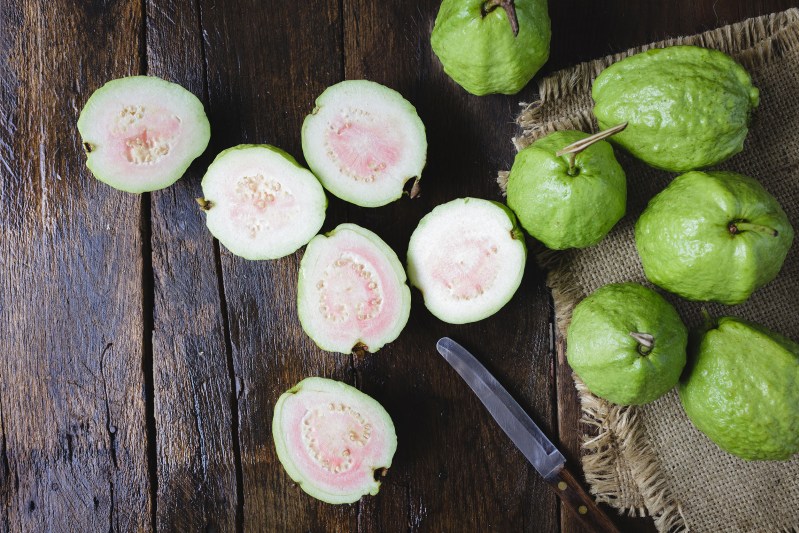
Guavas are a sweet, somewhat tropical fruit flavor akin to a cross between a strawberry and a pear. Though not particularly popular in the United States, guavas are one of the best dietary sources of vitamin C. Each cup of guava contains 377 mg of vitamin C or 419% of the recommended daily intake. Another way to compare the nutrient profile of different fruits is by looking at the concentration of certain nutrients in a 100-gram serving. In the case of guava, 100 g contains 228 mg or 254% of the RDI of vitamin C. Guava pairs well with strawberries, mango, pears, pineapples, papayas, melons, bananas, and other tropical fruits. Consider making a tropical fruit salad to help remind you of warm weather and summer getaways as the cold temperatures roll in this winter.
Kiwi
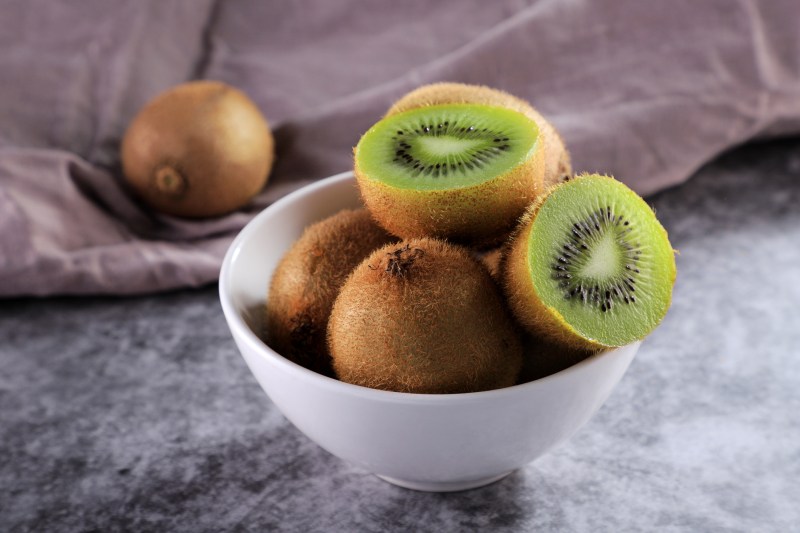
Each cup of kiwi fruit contains 167 mg or 185% of the RDI for vitamin C, while 100 grams provides 93 mg. Kiwi makes a great snack and they tend to travel well.
Strawberries
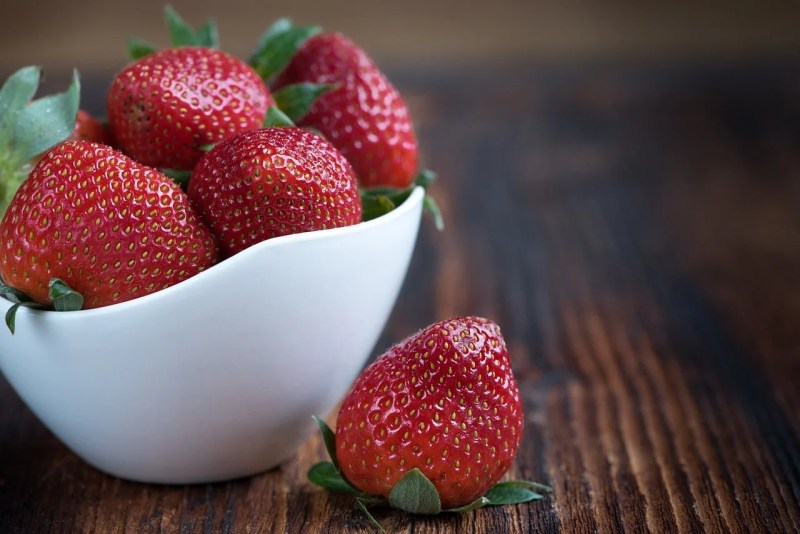
Strawberries are nearly a universal fan favorite when it comes to fruit. Although they are not in season during the wintertime in the United States, it is still possible to get them year-round. That said, there’s nothing quite like fresh, local strawberries in the summer (and vitamin c is not just a crucial nutrient in the winter, of course!). Each cup of strawberries contains 98 mg or 108% of the RDI of vitamin C. Because strawberries are relatively low in calories, you can also get 368 mg or a whopping 408% of the RDI in just 200 calories of these delicious berries. Raspberries, blackberries, and blueberries also contain vitamin C, though not as much.
Bell Peppers
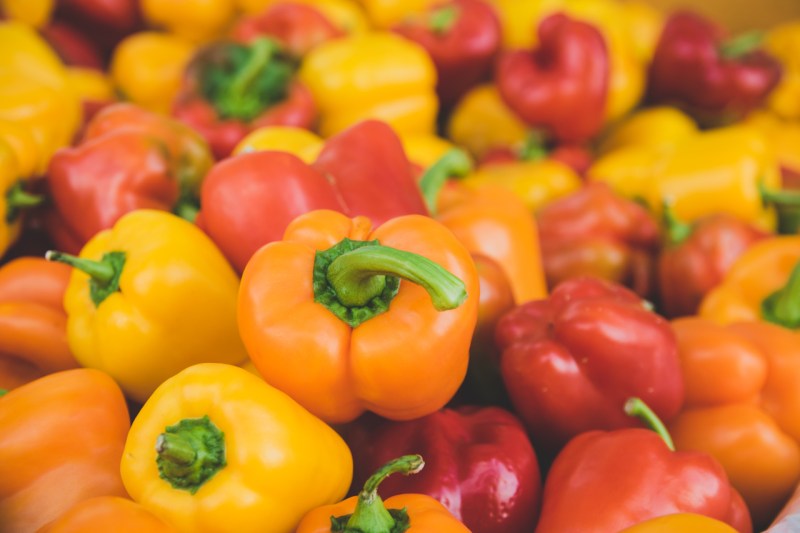
Bell peppers are a great source of anti-inflammatory foods as are also one of the best dietary sources of vitamin C. When it comes to vitamin C content, color matters: red peppers earn first place when it comes to vitamin C concentration, with 190 mg (212% RDI) per cup. Yellow peppers have 138 mg, and green peppers come in at 120 mg per cup. Orange, yellow, and red bell peppers are especially nutritious because they also contain vitamin A, beta-carotene, and lycopene, which help regulate inflammation by suppressing pro-inflammatory T-helper cells and suppressing the expression of genes for different inflammatory cytokines.
Kale
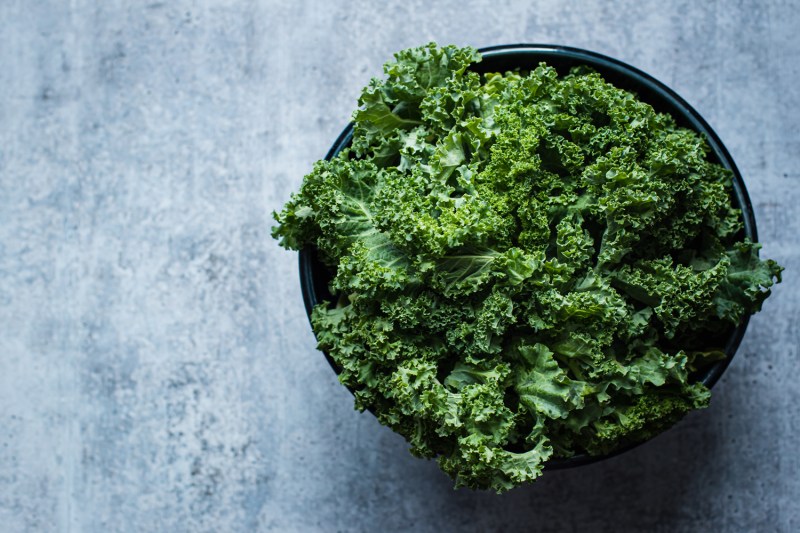
One cup of raw kale contains 23 mg (26% RDI) of vitamin C. Other dark, leafy greens, such as spinach, turnip greens, and Swiss chard, also provide a hefty dose. Dark greens also provide iron, calcium, vitamin K, a decent amount of protein, and nitrates, which have been shown to increase the body’s production of nitric oxide, which improves the function of blood vessels and can lower blood pressure.
Broccoli

There are a few lists of the top healthy foods that do not include broccoli, so it comes as no surprise that thus nutritious cruciferous vegetable earns a spot on the list of the foods highest in vitamin C. One cup of broccoli provides 81 mg of vitamin C, and if you’re looking for a food that packs the most potent vitamin C punch per calorie, you can’t go wrong with broccoli. As a nutrient-dense, low-calorie food, broccoli provides an incredible 525 mg or 583% of the RDI of vitamin C in a 200-calorie portion. Brussel sprouts or another excellent source of vitamin C in the same cruciferous family. Each cup of Brussels sprouts contains 107% of the recommended daily intake of vitamin C. Enjoy broccoli or Brussels sprouts steamed, roasted, chopped in salads, or seasoned lightly and then cooked in an air fryer.
Papaya
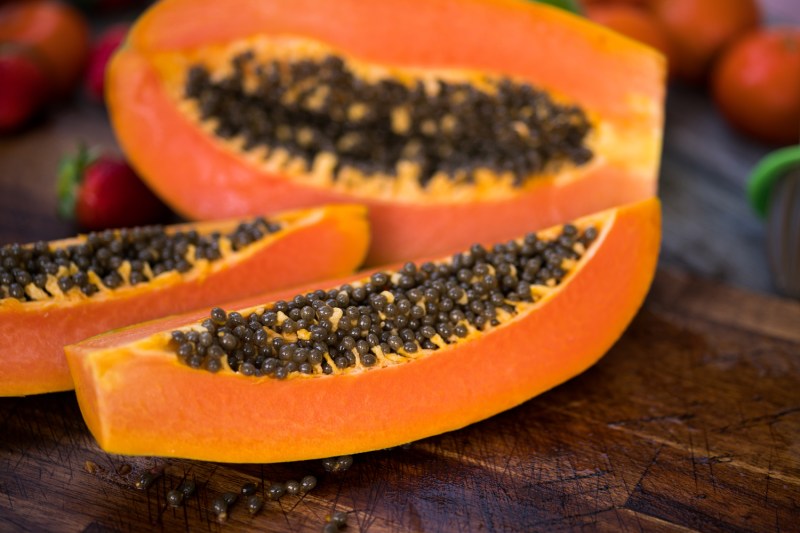
One cup of the sweet flesh of this tropical fruit contains 88 mg of vitamin C or nearly 100% of the recommended daily intake. Papaya is a great food for healthy skin and is often used in skin care products because of its rich vitamin C content, which can help combat oxidative damage that can age skin.
Tomatoes

Tomatoes are a versatile “veggie” (they’re technically a fruit) that can be enjoyed raw or cooked in many applications from salads to sauces, soups to healthy juices. One cup of tomatoes has 55mg (61% RDI) of vitamin C, while 100 grams contains 23 mg. They are also in lycopene, a carotenoid that protects your cells against oxidative damage from free radicals, and contain selenium, a vital mineral. A large cohort study found there to be an inverse relationship between tomato and tomato product consumption and coronary artery disease and heart disease risk.
Black Currants
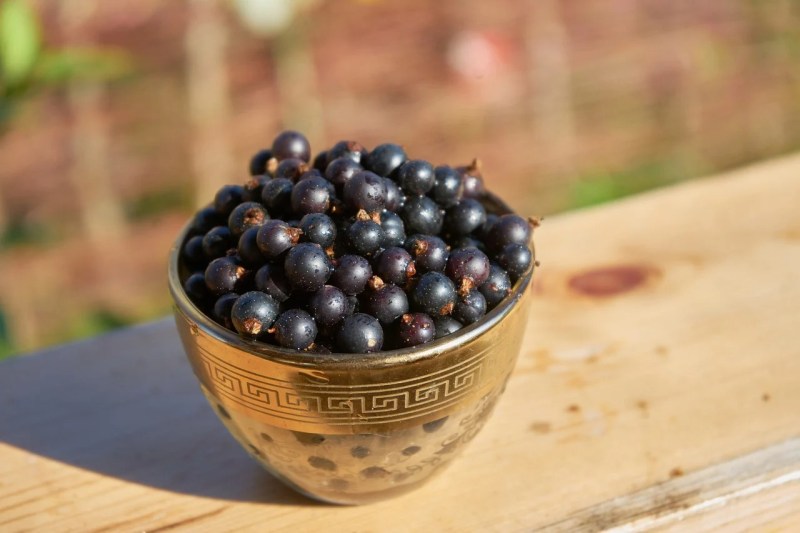
Black currants are an underappreciated delicious superfood. Their deep purple color is a product of anthocyanins, an antioxidant flavonoid that can fight free radicals and reduce oxidative damage. They are juicy and have a bright flavor. Each cup of black currants has an incredible 362 mg (402% RDI) of vitamin C.
Oranges
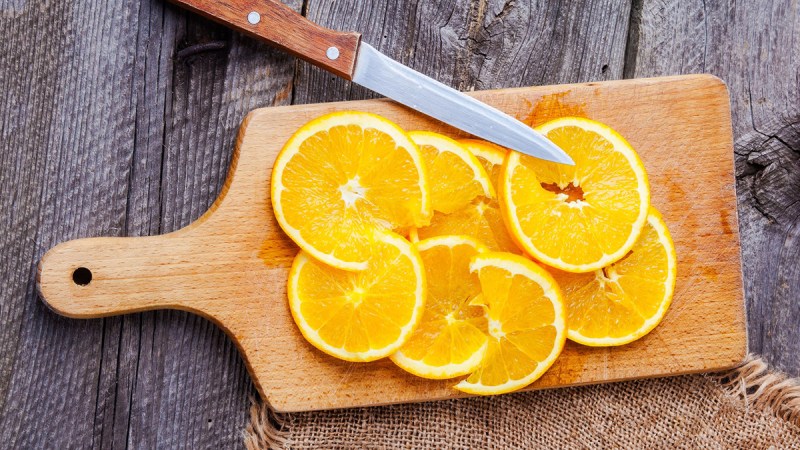
This classic citrus fruit is arguably the first food that comes to mind when people try to think of the best dietary sources of vitamin C, and while oranges are not actually at the top of the list, they are still a rich source of this nutrient. Oranges contain 96 mg or 106% of the RDI of vitamin C per cup and 53 mg per 100 grams of fruit. Pomelos, which are another large citrus fruit, are also packed with vitamin C. A whole pomelo contains over 400% of the recommended daily intake. Other citrus fruits such as lemons, clementines, and grapefruits are also excellent sources of vitamin C. For example, one medium-sized grapefruit provides about 96% of the RDI, while each little clementine has 40% of the RDI.
Thyme
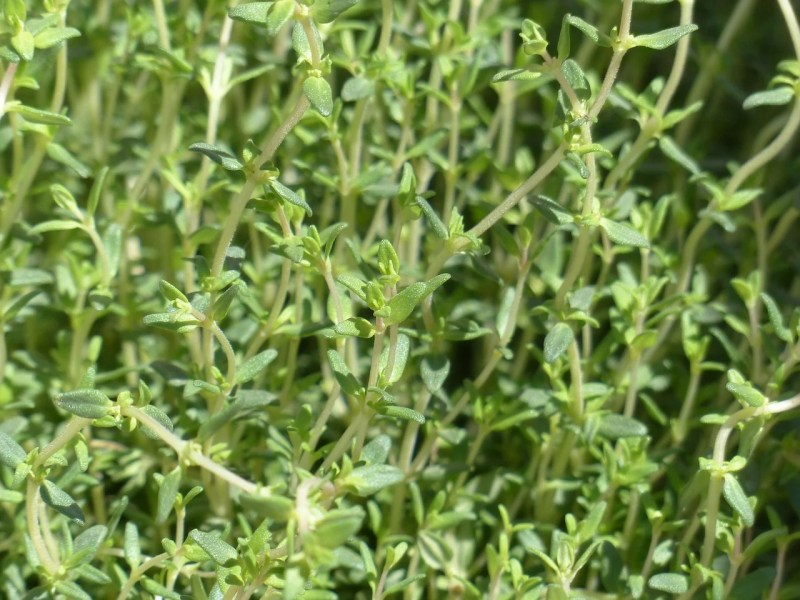
Thyme is a lemony herb that can be enjoyed fresh or dried. Though you’re certainly not going to consume thyme in the same volume as any of the other dietary sources of vitamin C on this list, it’s such a potent source that it is worthy of a spot on this list. A single ounce of this versatile herb contains 50% of the recommended intake of vitamin C. Try pairing thyme with goat cheese and apple or using it to season fish, chicken, or tofu.


